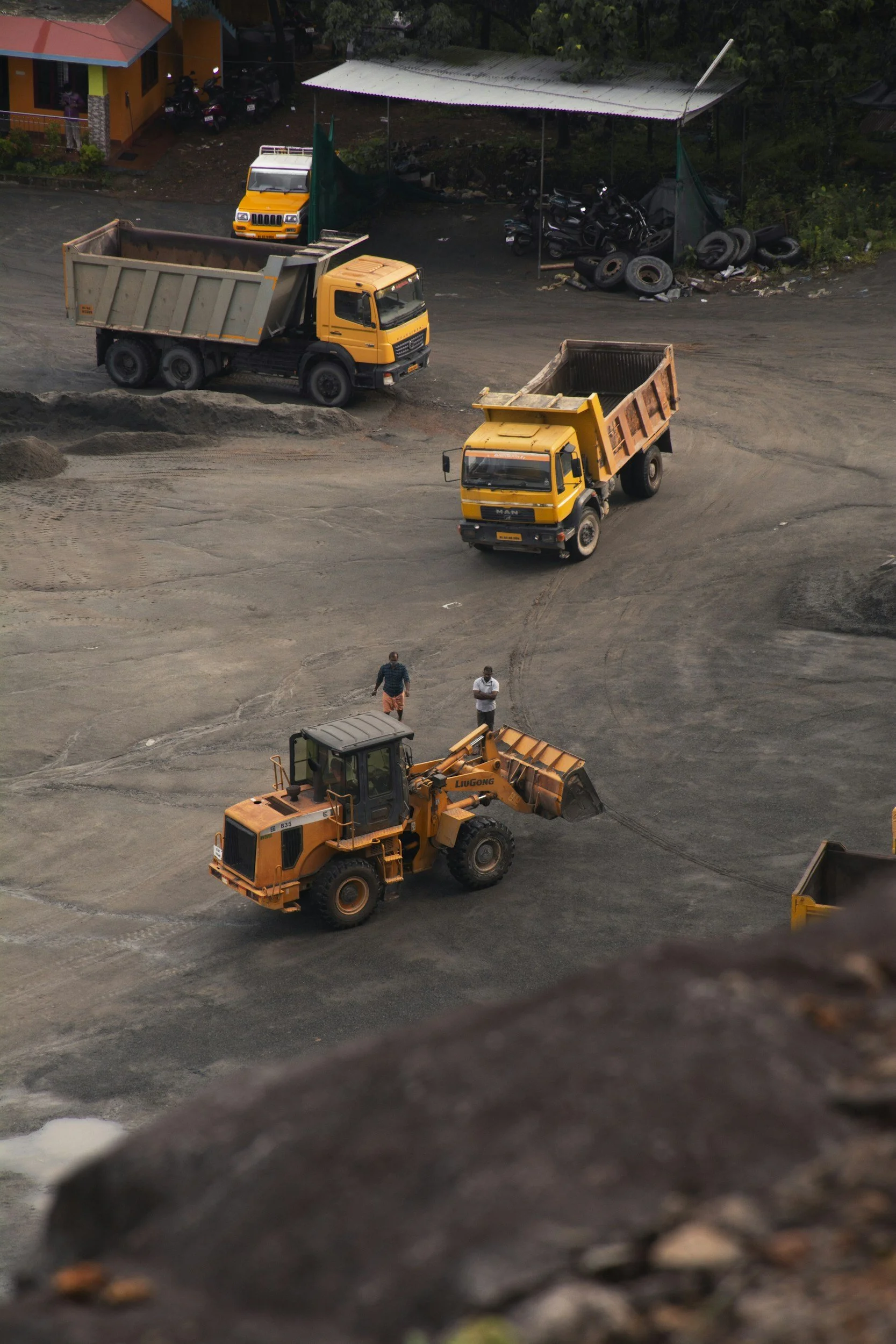Driving Better Behaviors: The Threat of Aggressive Driving in Construction
Construction sites are already complex and high-risk environments. With heavy machinery in motion, tight deadlines, and constantly shifting terrain, every moment demands precision, patience, and full attention. But there’s one hazard that often flies under the radar: aggressive or reckless driving.
Whether it’s speeding through a work zone or ignoring a flagger’s signal, aggressive driving can instantly transform a safe jobsite into a chaotic and dangerous space. And the consequences? Often felt immediate, sometimes even fatal.
What Is Aggressive Driving in Construction?
Aggressive driving in construction is a hazardous behavior that endangers lives. Unlike regular roadways, construction sites are dynamic, unpredictable, and filled with vulnerable workers and heavy machinery.
Here are some common examples of aggressive driving behaviors in construction settings:
Speeding Through Work Zones
Exceeding posted speed limits drastically reduces reaction time and increases the likelihood of collisions with workers, equipment, or structures. In 2023 alone, 898 people died, and over 40,000 were injured in work zone crashes.[1]Tailgating Equipment or Vehicles
Following too closely behind slow-moving machinery or site vehicles is reckless. These vehicles often make sudden stops or wide turns, and tailgating increases the risk of rear-end collisions or being struck by swinging equipment.Ignoring Site Signage
Construction zones are carefully marked with signs indicating speed limits, detours, and hazard zones. Disregarding these signs undermines site safety protocols and can lead to accidents in areas with limited visibility or active work.Sudden Lane Changes or Erratic Maneuvers
Swerving around obstacles, cutting off other vehicles, or making abrupt turns can confuse other drivers and equipment operators. These unpredictable actions can cause multi-vehicle incidents or force workers to take evasive action, putting them in harm’s way.Disregarding Flaggers or Traffic Controllers
Flaggers are trained to manage the flow of vehicles and protect workers and pedestrians. Ignoring their signals or instructions is extremely dangerous. These individuals are the frontline defense against traffic-related incidents on site.
Why Aggressive Driving is So Dangerous
Reduced Reaction Time
Workers may suddenly step into a vehicle's path, equipment can shift or halt unexpectedly, and terrain can change rapidly. When a driver is speeding or making aggressive maneuvers, their ability to react to these changes is greatly diminished. Even a split second can be the difference between a near miss and a serious injury. Aggressive driving removes the safe buffer of time, turning manageable risks into dangerous situations.
Equipment Blind Spots
Heavy machinery such as excavators, loaders, and dump trucks are crucial to construction work, but they have significant visibility issues. These machines often have large blind spots, especially to the rear and sides. When a driver tailgates or tries to pass these vehicles aggressively, they might enter an area where the operator cannot see them. This can cause serious accidents, including crushing injuries or collisions during turns or backing up. According to OSHA, over half of worker fatalities in construction zones involve vehicles or equipment.[2]
Worker Vulnerability
Construction workers often work outside, on foot, and in close proximity to moving equipment. Many wear PPE that can limit their peripheral vision or hearing, such as hard hats, ear protection, and face shields. A single reckless move—such as speeding through a pedestrian zone or ignoring a stop sign—can cause a worker to be hit, pinned, or run over. These accidents are usually severe and entirely preventable with careful driving and awareness of the surroundings.
Chain Reaction Hazards
Aggressive driving doesn’t just impact the person behind the wheel; it can affect the entire site. A sudden lane change or abrupt brake can cause other drivers or equipment operators to react suddenly, leading to multi-vehicle crashes, equipment damage, or even tipping hazards. In tight construction zones, a single poor decision can trigger a chain of events that puts multiple workers at risk and halts operations. Staying calm, predictable, and following the rules of the jobsite while driving helps maintain order and safety across the site.
Prevention Starts with Culture: Turning Awareness into Action
Building a safety-first culture isn’t just about rules; it’s about mindset. In high-risk environments, such as construction, where every decision can impact lives, fostering a safety culture is crucial.
Here’s how you can help to lead the way:
Follow Site Speed Limits
Speed limits aren’t just rules—they’re lifesaving measures. Stick to posted limits, especially in areas with heavy equipment or foot traffic. If you notice others speeding, speak up or report it through the proper channels.
Stay Alert and Drive Defensively
Whether you’re operating a vehicle or walking near one, stay aware of your surroundings. Avoid distractions, anticipate potential hazards, and allow yourself sufficient space to react. Defensive driving helps prevent accidents before they happen.
Speak Up About Unsafe Behavior
If you witness aggressive driving—speeding, tailgating, ignoring flaggers—don’t stay silent. Use anonymous reporting tools if available, or talk to your safety lead. Your voice can help prevent dangerous behavior from escalating.
Respect Flaggers and Traffic Controllers
Always follow the instructions of flaggers and site traffic personnel. They’re there to keep everyone safe. If you see others ignoring them, remind them of the importance of following signals and maintaining order.
Use Equipment Safely and Predictably
When operating machinery or driving site vehicles, avoid sudden movements or risky maneuvers. Communicate clearly with others around you and make your actions predictable to reduce confusion and prevent accidents.
Lead by Example
Your behavior sets the tone for others. When you drive safely, follow protocols, and treat others with respect, you encourage a culture of safety across the site. Others will follow your lead.
Final Thoughts
Aggressive driving in construction zones isn’t just a bad habit; it’s a serious safety threat. From reduced reaction times to chain-reaction hazards, the risks are real and preventable. By fostering a safety-first culture, investing in training and technology, and leading by example, construction teams can turn awareness into action. Every safe decision behind the wheel helps build a more secure, efficient, and respectful work environment.
Let’s commit to driving responsibly—because in construction, safety begins with every move we make.
[1] 2025 Highway Work Zone Safety Survey Results
[2] Motor Vehicle Safety - Construction | Occupational Safety and Health Administration


